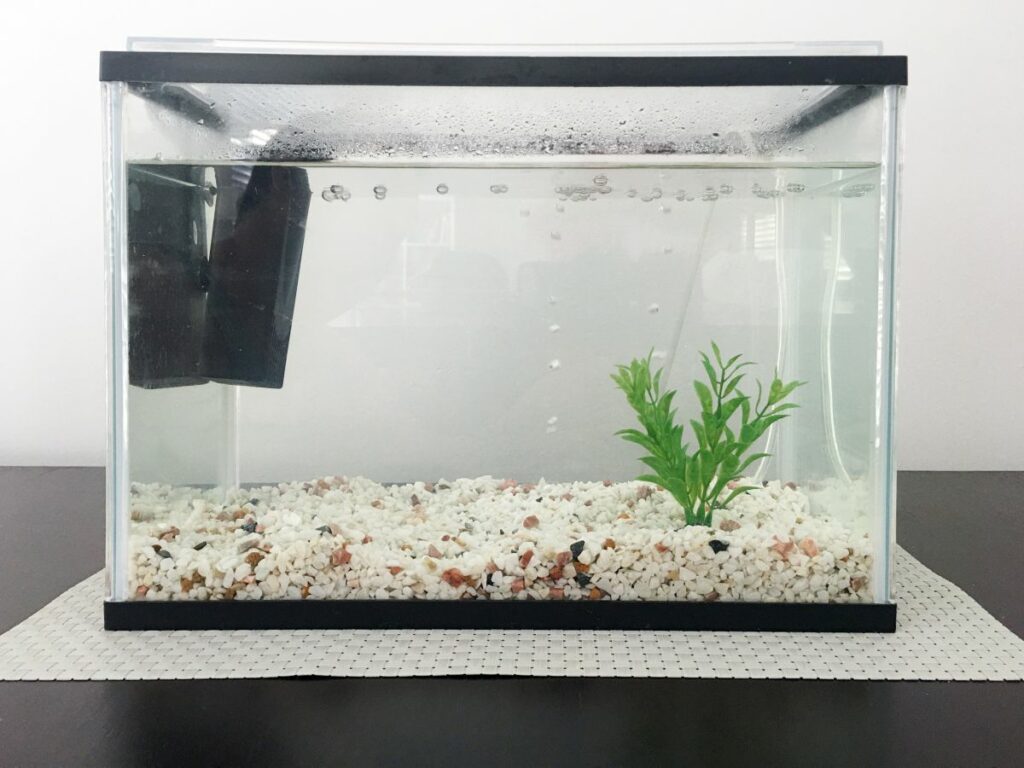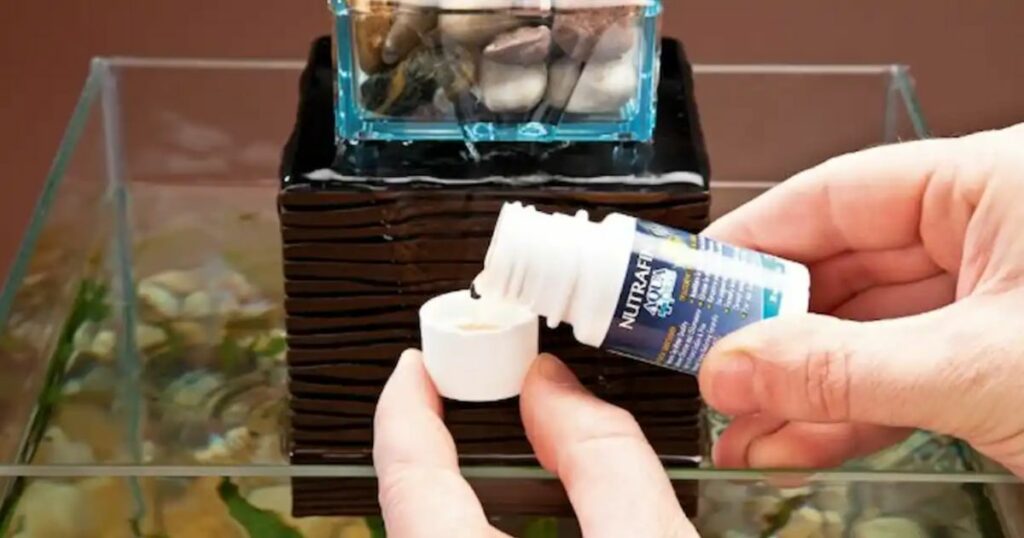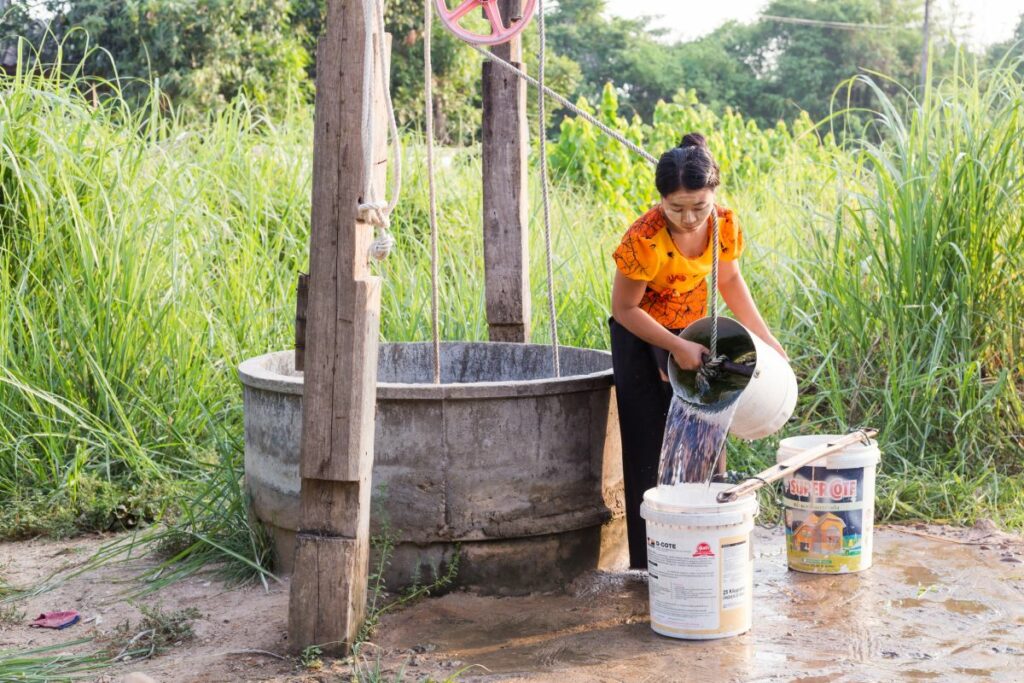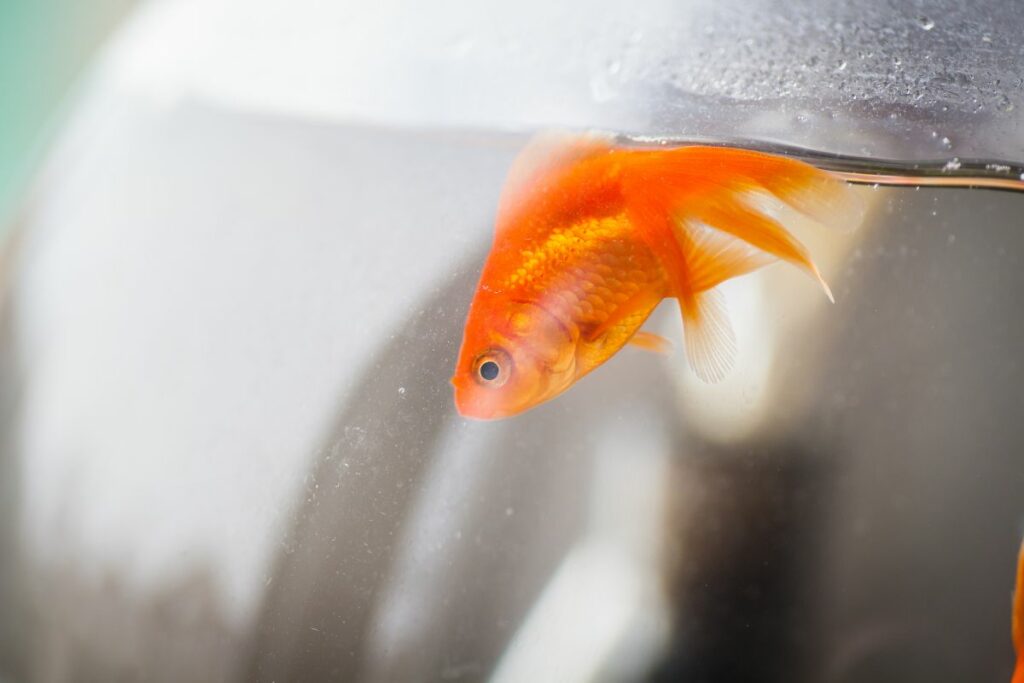Safe water is the most important thing you can provide your fish, including aged water, if you use municipal water.

You can use four main kinds of water for your fish tank: municipal, well, bottled, or RO (reverse osmosis) water. In most cases, municipal or well water is safe for your fish, although you’ll need to test it first and use a dechlorinator. Bottled water is a safe option for those with tanks under 10 gallons. RO (reverse osmosis) water is the purest option, but you’ll need to add minerals to your tank.
Those with municipal tap water will have chlorine or chloramine in their water. To remove chlorine, you can age or aerate your water or add a dechlorinator. To remove chloramine, you can use an all-in-one dechlorinator.
RO (reverse osmosis) is a filtration method that removes all impurities from the water. RO water is the safest for your fish, but you can’t use it alone. RO filtration removes impurities and minerals your fish need to live. You’ll need to add minerals to your tank to make the water safe for your fish.
What Water Should I Use For Fish Tank?
Most people use tap water for their fish, like municipal or well water. Tap water is not always safe for your fish, so consider using bottled water or RO (reverse osmosis) water instead.
Does Having Aged Water Matter?
To create aged water, you’ll simply let your tap water sit out for about 24 hours. Municipal water usually contains chlorine which is toxic to your fish. By allowing the water to sit out, the chlorine will evaporate, making your tap water safe for your fish.
Can You Use City Water In A Fish Tank?
City (municipal) water is safe for your fish as long as you treat the water first. Most municipalities treat their water with chlorine or chloramine to make it safer for you to drink. Unfortunately, while those chemicals make the water safer for you, they make water lethal for your fish.
Chlorine and chloramine are toxic for your fish and will kill them if you don’t remove them from the water.
Remove Chlorine With A Dechlorinator

Fortunately, chlorine is easy to remove from the water. To get rid of chlorine more quickly, you’ll need to buy a dechlorinator from your local pet store to treat your water. Dechlorinators remove chlorine and other heavy metals from the water, making it safe for your fish. My favorite dechlorinator is API Stress Coat because it removes chlorine and improves your fish’s natural slime coat to boost their health.
Remove Chlorine With Aeration
You can also fill up a bucket with tap water and allow it to sit for about 24 hours before adding the water to your tank. Aeration dissipates chlorine over time, which is one reason some municipalities are turning to chloramine — it is more stable and doesn’t go away over time. You can also add an airstone to your bucket of water to speed up the dechlorination process.
Remove Chloramine With An All-In-One Dechlorinator
Chloramine is chlorine bonded to ammonia; it’s just as toxic as chlorine but harder to remove from your water. You can still remove chloramine with a dechlorinator, but you’ll need to be careful about choosing one. Some dechlorinators only remove chlorine and won’t be effective against chloramine.
Also, be careful when choosing a product that says it removes chloramine. Some claim to remove chloramine but make no mention of also eliminating ammonia. Those products break the bond between chlorine and ammonia but don’t break down the ammonia. So, you’ll no longer have chlorine in your water, but there will still be ammonia which is equally as toxic to your fish.
The best option is to buy a dechlorinator that removes chlorine, chloramine, and ammonia. One good option is API Aqua Essential water conditioner which removes chlorines, chloramines, ammonia, nitrites, nitrates, and heavy metals. Another option is Natural Rapport All-In-1 Water Conditioner which removes ammonia, nitrites, chlorine, and chloramine.
Remove Chloramine With RO (Reverse Osmosis) Filtration
Another option to remove chloramine from your water is to use an RO (reverse osmosis) filtration system. The initial installation of an RO filtration system is somewhat costly, but the water is healthier for your fish and makes water changes more manageable.
Remove Chloramine With Activated Carbon
Activated carbon is another excellent option for naturally breaking down chloramine and removing chlorine and ammonia from your water. You can buy a simple filtration system for your tap water that includes activated carbon.
Take caution with this method, though, as chloramines need contact with activated carbon for a more extended time to be removed entirely. Chloramines also exhaust activated carbon rather quickly, so you’ll need to replace the carbon regularly. It’s best to pair activated carbon with an all-in-one dechlorinator.
Can You Use Bottled Water For Your Fish Tank?
Bottled water makes a good option for small aquariums under 10 gallons if you don’t trust your municipal or well water. Using bottled water for aquariums over 10 gallons gets costly very quickly, so I don’t recommend it. Also, avoid bottled water sold at the pet store. Pet store bottled water is exactly the same as that sold at the grocery store, but the price is marked up significantly.
Not all bottled water is healthy for your tank, though. Avoid distilled water because it lacks minerals and beneficial buffers that will kill your fish.
Use spring water if you’ll be using bottled water for your fish because it has the healthiest levels of minerals and buffers.
Avoid changing brands, as their parameters are all different. Fish can go into shock if their water parameters change too rapidly.
Can I Use Well Water In My Fish Tank?

The quality of well water varies from place to place, so it’s essential to know the components of your well water before adding it to your fish tank.
The Florida Department of Agriculture and Consumer Services (FDACS) explains why well water may not be safe:
“Well water usually has little or no oxygen but often contains high levels of dissolved carbon dioxide and nitrogen. As such, well water should always be aerated (approximately 24 hours) before coming in contact with fish. Some wells also contain high levels of hydrogen sulfide (which is detectible as a rotten egg odor) or iron, both of which are detrimental to fish. Heavy aeration will help remove hydrogen sulfide and will allow dissolved iron to settle out as rust, which can then be separated from the water.”
Even if your well water is deemed safe for drinking, it may not be suitable for fish. Safe-for-us drinking water may still contain levels of ammonia, nitrite, pH, or hardness that are unsafe for your fish. Fortunately, pet stores sell water-testing kits that check for these parameters, so you should test your well water before considering using it for your fish.
Another problem is that well water may contain heavy metals and pesticides. Well water is less regulated than municipal water. Well water doesn’t usually contain chlorine like municipal water, but that doesn’t mean it’s always better.
RO Water For Freshwater Aquarium (Or Saltwater)
RO (reverse osmosis) water is the best option for your fish if you can use it. What is osmosis? It’s Not Just a Fish does an excellent job of explaining:
“To understand reverse osmosis, you need to understand osmosis.
Osmosis is the movement of solvent molecules through a selectively permeable membrane into a region of higher solute concentration, aiming to equalise the solute concentrations on the two sides.
Pardon? Try to imagine an aquarium divided down the middle by a semi-permeable membrane through which only water can pass. Now imagine pouring salt into one half of the aquarium. The water molecules move from the unsalted side to the salted side in order to equilibrate the salt concentration, the level of water rises on the salty side and drops on the other. Weird huh?
Now try to imagine applying pressure to the salted side of the aquarium. The pressure overcomes the osmotic force and fresh water moves from the salted side to the unsalted side – hey presto – reverse osmosis. This is essentially what happens inside an RO unit.
Reverse osmosis water is essentially water with everything contained within it removed.”
RO water is safer for your fish because it contains no impurities that municipal and well water contains. Still, RO water is not suitable for use in your fish tank on its own. While RO filtration removes impurities from the water, it also removes the minerals necessary to support your fish.
Municipal and well water contains minerals like calcium and magnesium, essential to fish’s health.
A reverse osmosis system lowers pH and removes GH (general hardness), KH (carbonate hardness), and TDS (total dissolved solids).
Reverse Osmosis Lowers The pH
pH refers to how acidic or alkaline your water is, and each fish species has its own pH preference. The pH scale ranges from 1-14. A pH below “7” is acidic, while a pH above “7” is alkaline.
Reverse osmosis water is naturally slightly acidic, so depending on your fish’s pH preference, you may need to raise the pH.
To naturally raise pH, add small amounts of baking soda, or decorate the tank with limestone, crushed coral, dolomite chippings, and aragonite. Keep in mind that these aquarium additions are not safe for all fish. For instance, you should only use crushed coral in saltwater aquariums.
Fish stores also sell chemical pH buffers to add to your tank. Chemical buffers work more quickly than natural options, but you must add them to the water with each water change.
Reverse Osmosis Eliminates GH (General Hardness)
General hardness refers to the calcium and magnesium levels in the water. Water with more minerals is “hard” water, while water with few minerals is “soft” water. Too hard water can harm your fish, but they need some minerals to survive. Each fish species has its own ideal GH level that needs to be met for them to thrive. GH encourages bone and muscle growth, helps digestion, and strengthens immunity.
RO filtration removes GH, so you’ll need to adjust the GH level to your fish’s needs. For cichlids and saltwater fish, adding mineral-rich limestone, crushed coral, or aragonite are options. For other fish, you can purchase buffers that raise GH levels.
Reverse Osmosis Eliminates KH (Carbonate Hardness)
KH refers to the levels of carbonates and bicarbonates, which act as a pH buffer, preventing the pH from rapidly fluctuating. Your fish create waste like ammonia and nitrites, which feed off the KH rather than the pH. In saltwater tanks, bicarbonates help with exoskeleton growth in corals.
Like GH, each fish species has its own KH preference. Fish that prefer a higher pH also tend to need a higher KH level. RO filtration removes KH from the water, so you’ll need to adjust it to your fish’s ideal levels. To raise KH, add sodium carbonate (soda ash) or bicarbonate (baking soda). Mix and dissolve these in the water before adding them to the aquarium. To naturally raise the KH, add dolomite rocks, aragonite, or crushed coral.
How Long Can Fish Survive In Chlorine Water?

Municipalities add chlorine to the water because it enters the cell walls to kill bacteria, fungi, parasites, and other harmful microbes. Chlorine is beneficial for us as drinking water, but it’s toxic to fish. Chlorine enters the cells of your fish and damages gill tissue and red blood cells, and disrupts their natural biological processes.
Fish may live a few days in water with low chlorine levels, but they will die within minutes if they are high enough.
Aquarium Water Storage
Many people store water until the following water change, primarily if they use RO water which sometimes takes longer to prepare. Storing water is easy as you can keep it in jugs or buckets. For tap water, keep the container open for 24 hours to allow the chlorine to dissipate. After that, cover the container to prevent dust, insects, or anything else from entering the water.
FAQs
Yes, you can use betta water conditioner for goldfish and other freshwater fish. You’ll often see products marketed toward bettas alone, but this is a ploy by companies to make more money. “Betta” water conditioner is the same as any other water conditioner.
API Stress Coat and other water conditioners claim to remove chlorine instantly. To be safe, I think it’s better to add the dechlorinator to the water and allow it to sit for a couple of minutes before adding the new water to the tank.
Yes, water conditioners do expire. Some water conditioners come with an expiration date, while others don’t. To be safe, I recommend disposing of your water conditioner a year after it’s been opened.
Yes, water conditioner is safe to add directly to your tank. Still, I don’t recommend dechlorinating your water this way. Water conditioner is meant to remove chlorine immediately. If you add new water to the tank and THEN add the dechlorinator, the chlorine has already had time to damage your fish.
Allow water to sit out for about 24 hours to remove chlorine. Cover your water after no more than 48 hours to prevent dust, insects, or anything else from entering your water.
